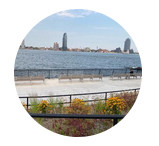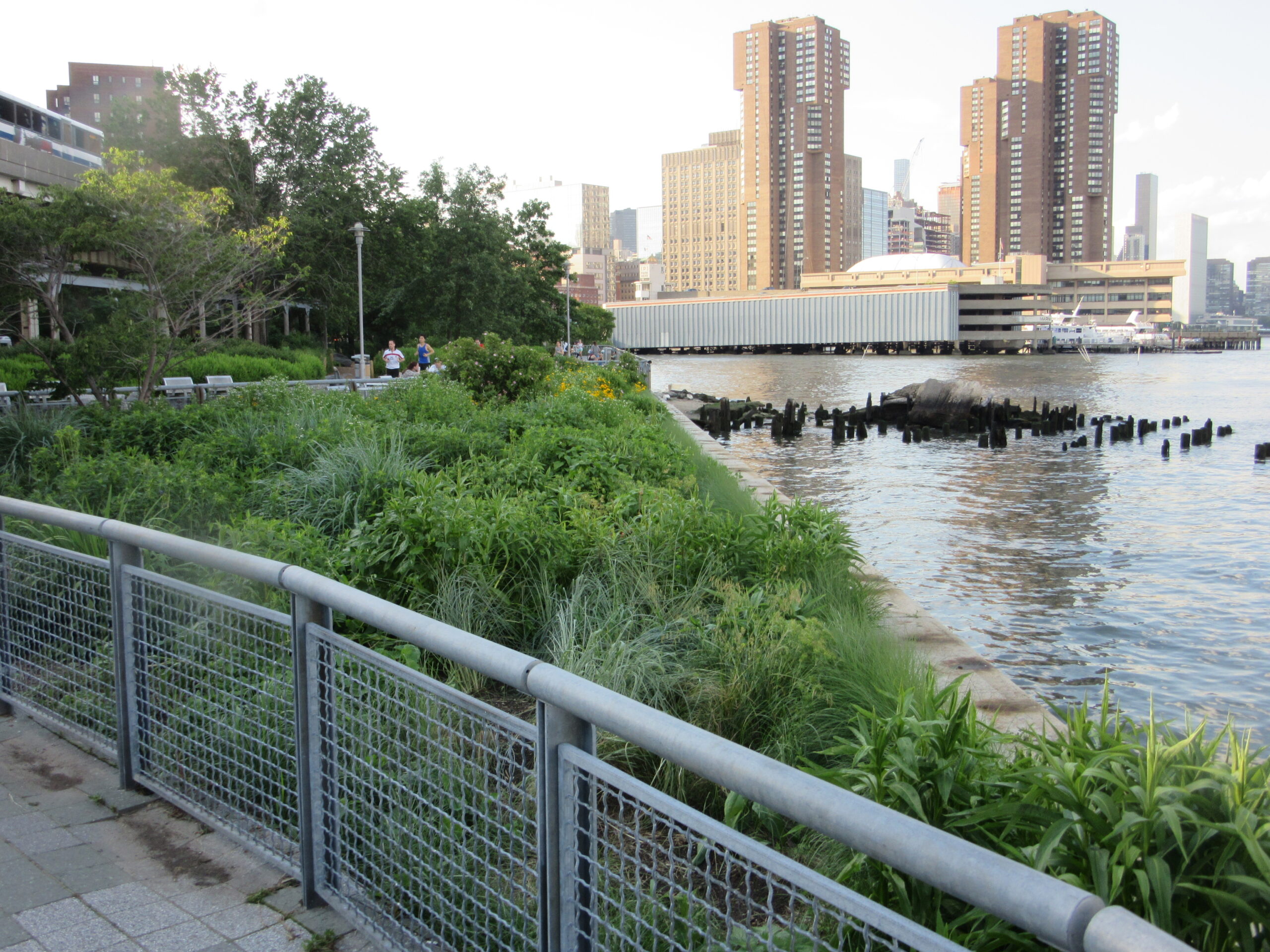
The Story Begins . . .
The Stuyvesant Cove Park Association grew out of a community effort in the mid-1980’s to defeat a plan to build a mega-complex on platforms extending into the East River. The proposed site, formerly a cement plant, was a bleak and uninviting brownfield where The Related Company proposed to build 1,888 luxury residential units, a 245-room hotel, a 200-slip marina, and 220,000 square feet of commercial space, including offices, restaurants, and theaters.
City Reports Accord with Developer for East River Complex, The New York Times, November 4, 1983
A Community Responds
When news of the planned development became known, area residents, fearing they would lose access to the waterfront, rallied against the development, and advocated for much needed greenspace in the area. Over the next decade, the Citizens United Against Riverwalk (CUAR) movement also argued that the proposed plan would overwhelm the area’s infrastructure and be detrimental to aquatic life in the river. The plan was finally defeated in 1992, and in 1997 the Economic Development (EDC) announced a new effort, spearheaded by local elected representatives including the late Senator Roy M. Goodman, former Assemblyman Steven Sanders, and former Councilman Andrew S. Eristoff. Over the next several years, a plan took shape that reflected their input and that of CUAR, Community Board 6, and countless concerned area residents.
The Stuyvesant Cove Park Association is Formed
With the Riverwalk development no longer a threat, The Stuyvesant Cove Park Association, Inc. (SCPA) was established in 1997 to carry the success of CUAR through the next phase and beyond.
A Park Rises
Stuyvesant Cove Park, stretching from 18th to 23rd Streets along the East River, was dedicated in June 2003 with funding from state, city, and federal sources. Today, it stands as a testament to the strength of community and the power of commitment.
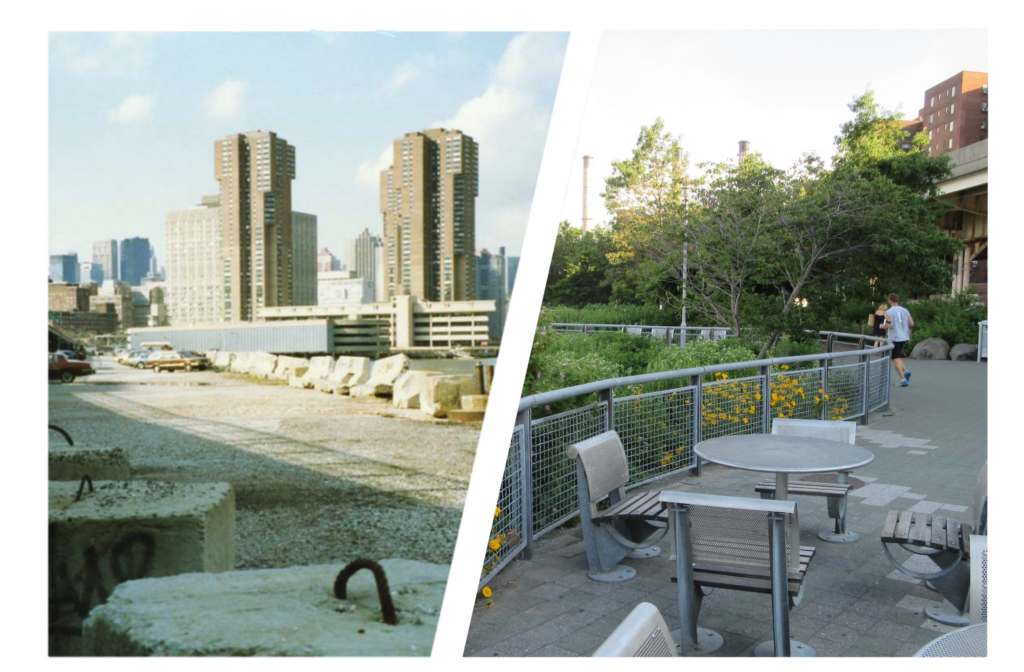
East Side Story, Landscape Architecture, August 2003
More Work To Do
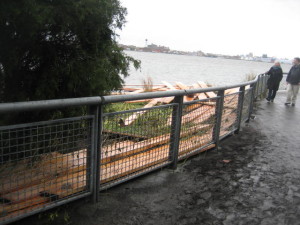
In October 2012 Hurricane Sandy roared into New York City leaving a trail of destruction throughout the region and the city. In Stuyvesant Cove Park plant beds were destroyed, soil and mulch were washed away, and the performance stage was reduced to a pile of rubble.
The strength of Sandy’s storm surge was on clear display when cars parked along 20th Street between the East River and First Avenue were washed from their parking spots and hit with flotsam washed up from as far away as Brooklyn.

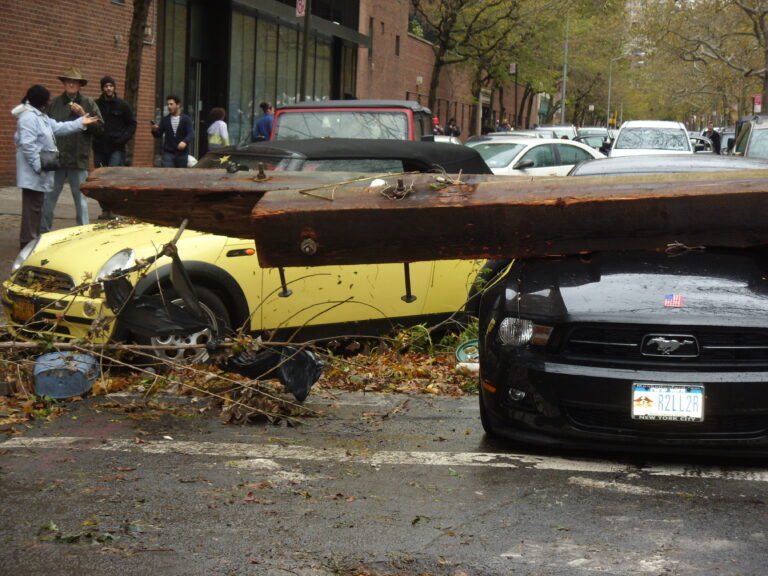
Thanks in part to funds from the Stuyvesant Cove Park Association, the team at Solar 1, joined by dedicated Park Angels and other members of our caring community, were able to restore the park.
Hurricane Sandy, with all its devastation, gave birth to The East Side Coastal Resiliency Project. Using a combination of flood walls, deployable barriers and berms, the project seeks to redesign both the landscape and hardscape of waterfront locations so that they are better situated to prevent, or at least better survive, the effects of a future storm surge. Click here for the most recent plan update.
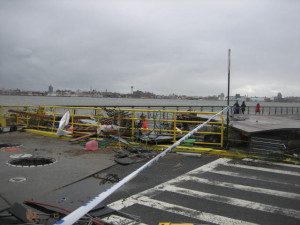

Never doubt that a small group of thoughtful, committed citizens can change the world; indeed, it’s the only thing that ever has.
Margaret Mead
